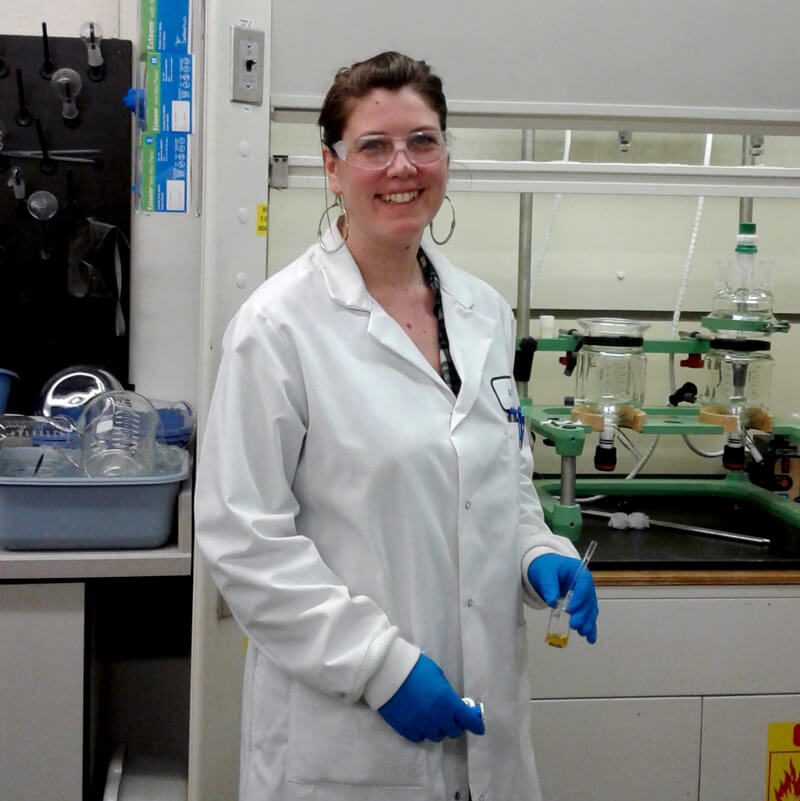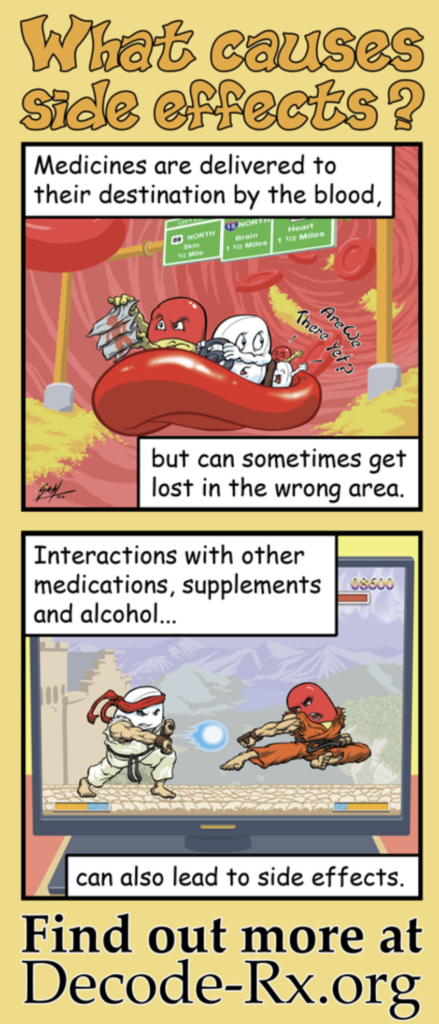As a volunteer-run professional society, the Association of Science Communicators depends on our vibrant community for our success. Our volunteers help with conference logistics, community engagement, partnership development, and much more. For our first volunteer spotlight Q&A, we’re featuring Amanda Pluntze, ASC’s course coordinator. Scott Hershberger (ASC’s newsletter editor) spoke with Amanda about her work as a pharmaceutical chemist, her science communication project using comics to demystify prescription medications, and her behind-the-scenes efforts to coordinate ASC’s professional development courses.
Scott Hershberger: What do you do in your day-to-day work?
Amanda Pluntze: I’m a chemist. For the last nine years, I have worked at Lonza, a pharmaceutical research and development company in Bend, Oregon. I’m in our internal research and development team, looking at fundamental science so that we can innovate on our current technologies. I also do a lot of troubleshooting on our client programs. My work is probably 60% to 70% lab time, running experiments and figuring things out.

SH: What’s your favorite aspect of your work?
AP: Our company runs on the “jack of all trades, master of none” mindset, which works great for me. Rather than being an expert on one instrument and running through a queue of samples, I’m in charge of projects and get to do everything—the thermal testing, the microscopy, understanding the powder properties. We get to touch lots of different instruments, and every day is different. Lots of problems and unexpected challenges to face, which I very much thrive on.
SH: One scicomm project that you’ve been involved with was Decode Rx. Could you talk about that?
AP: That was the winner of the inaugural #SciCommMake competition run by ASC and Sigma Xi. It’s a competition where they pair science communicators, artists, and scientists on a collaborative team for science communication. My project partner, Justice Morath, and I met through this competition. We wanted to do something tangible to reach audiences that are not necessarily seeking scientific information through digital platforms.
There are a lot of questions, misconceptions, and trust issues within the pharma industry, but it’s really important for patients to understand those things. And with a lot of fears and unknowns, even if you want the information, you might not know what questions to ask your health care provider. So what we decided to do was collaborate with artists to come up with comic-based infographics about side effects, safety, why the instructions are what they are. We printed them out as stickers that we adhered to the pharmacy baggies that you get when you pick up a prescription.
During our pilot program in early 2020, every single patient coming to a particular pharmacy in Salt Lake City got a bag with information. Whether they were looking for it or not, they saw this information that is hopefully visually engaging, presented in a way that they hadn’t seen it before, and so it piqued their curiosity and interests. We also built a supplemental website where they could get a lot more information.

SH: What feedback did you get from patients?
AP: In about a quarter of the bags, we put a postage-prepaid feedback survey for anyone to fill out, and the feedback that we got was promising. Most people said, “Yeah, this was interesting. I would love to see more of this.” The pharmacist that we worked with said that everyone who got the infographics seemed to enjoy them. We didn’t take it beyond the pilot level within the $1,000 budget that we had, but we’d still love to.
I also was able to present a poster on the project this year at the American Association of Pharmaceutical Scientists conference. A lot of people from the industry were interested in it. But pharma industry communication is an interesting problem to take on because there are so many layers of regulation, and there is a focus on the marketing side, not the patient side.
I really enjoyed the project, and I made great connections. Working with artists was a totally different perspective. It was also a good learning opportunity for me to understand what scicomm is and get a flavor of what is truly involved in collaborative efforts and this visual style of communication.
SH: How has learning more about science communication influenced the way you approach your day job?
AP: Scientist-to-scientist communication is a challenge. I work on technology A, my coworker might work on technology B, we work on the same building, and technology A and B are under the same umbrella—but we don’t speak the same language. We also do a lot of communication to businesspeople. What I personally have been pushing is making our presentations and slides better, thinking about our story. If you’re talking to your direct coworkers versus the businesspeople, you better not be saying the same thing.
SH: Let’s turn to your involvement with ASC now. What do you do as ASC’s course coordinator?
AP: I’m in charge of all the backend stuff: initial communication with prospective course instructors, helping them use the course platform, setting up the registration, sending materials to the marketing team, and supporting the instructor throughout the course.
SH: What do you look for in an ASC course proposal? What makes a good ASC course?
AP: We want to offer our membership professional development opportunities within science communication for writers, journalists, videographers, actors, anything. We have such a broad umbrella, so we want to make sure that our courses offer a wide flavor profile to meet different needs. Moving forward we’re trying to focus more on advanced, in-depth training rather than just the baseline level because we want to have courses that can apply to people at different stages in their science communication careers.
SH: How can people propose a course?
AP: You can send an email to info@sciencecomm.org with a high-level description of what you’re interested in teaching and why, and a link to your credentials. Then we will set up an initial meeting to discuss further and make sure it’s a good fit.
SH: Why should people get involved in ASC?
AP: I think people should get involved in ASC if they have any desire to see science accurately represented in the world at large, whether they are scientists, communicators, or just have an interest in it. My favorite part is how many different approaches to science communication there are. The collaboration possibilities are endless.



[…] I also help coordinate other events. We did a recent panel with NSF Advancing Informal STEM Learning grantees and program managers that I helped coordinate. I also help oversee our courses program, which is run by our amazing course coordinator, Amanda Pluntze. […]